Trichoptera
There are 18 trichopteran families found in Hong Kong among 49 families recorded globally. Despite such a high diversity in HK, there are still some collected species undescribed. In this guide, we would focus to illustrate the family-level biological features.
Generally, three
major groups have been recognized, more or less corresponding to the different ecological adaptations of the
larvae.
Annulipalpia (fixed-retreat makers) - the name of the suborder refers to the terminal segment of the adult maxillary palps, which often has many tiny rings. The larvae construct fixed retreats (e.g. tube or net) in which they remain stationary for filter feeding.
Spicipalpia (closed-cocoon makers) - refers to the character of pointed maxillary palps in the adults. The larvae have varying lifestyles, from free-living to case-making, but all construct cases in their final larval instar for pupation or at an earlier instar as a precocial pupation behavior.
Integripalpia (portable-case makers) - refers to the progression of case making behaviors throughout larval instars. The larvae construct a wide variety of portable cases from different kind of substrates and way in architechture. These cases are always very specific in families and genera.
| Annulipalpia (fixed-retreat makers) | Spicipalpia (closed-cocoon makers) | Integripalpia (portable-case makers) |
Dipseudopsidae |
Rhyacophilidae |
Infraorder Plenitentoria: |
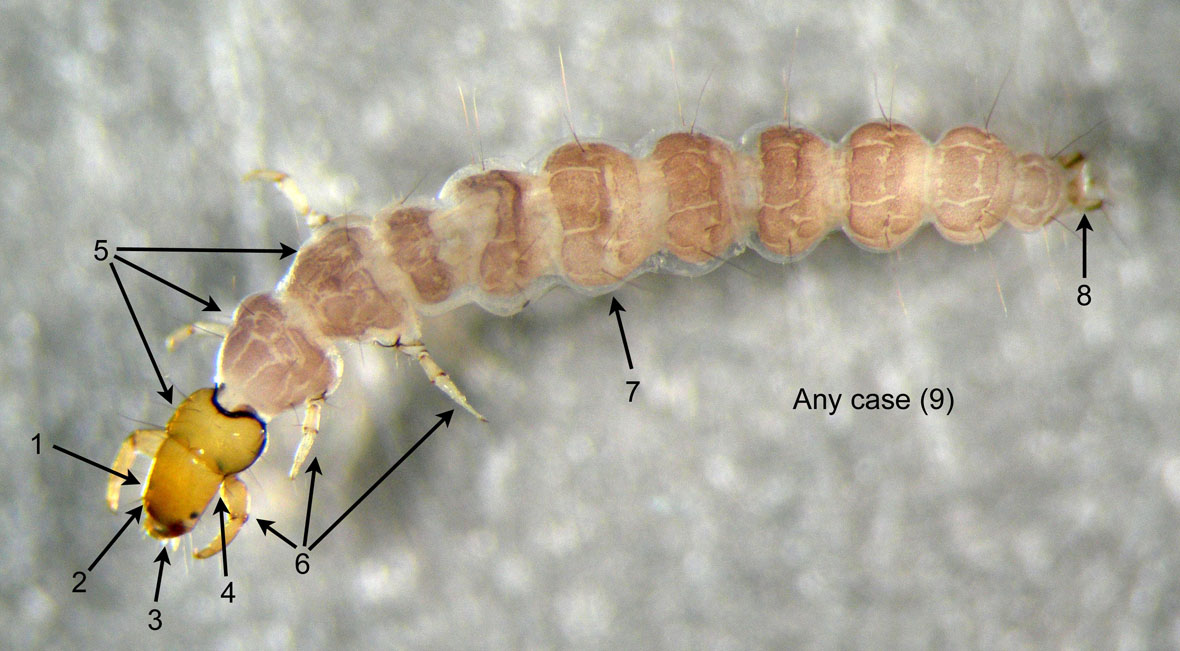 |
||
For families or genera identification, the examination of larval features should be conducted as follow: |
||
***** 1. Shape of head ****** |
||
Head capsule is fully developed and sclerotized for all trichopterans, but its outline might be varied from round to elongated shape. Besides, examination of line or suture and position of setae on head capsule is essential for identification. e.g. Larvae in subgroup Diplectroninae in Hydropsychidae, their ventral apotome divided into anterior and posterior parts which are differ from other hydropsychid larvae |
||
 |
||
****** 2. Length and position of antennae ***** |
||
Antennae are short and single-segmented for most trichopterans, but larvae under Leptoceridae, their antennae are considerably long (length >six times width, except Triplexa sp. but not found in HK). Trichopteran antennae are mostly situated at anterior margin of head capsule, but larvae in Odontoceridae, their antennae situated at anterior margin of eyes |
||
 |
||
***** 3. Structure of mouthparts ***** |
||
Trichopterans are having well developed labrum, a pair of strong mandibles and a composite structure of a pair of short maxillae and a labium. The mouthpart structure may be varied among families. e.g. Labrum highly modified into a membranous T-shaped structure that is a family trait of Philopotamidae. Mandibles might be varied among different feeding groups e.g. broad mandibles with apical cutting teeth in shredders and herbivores, while those of scrapers are more elongate with entire edges |
||
 |
||
***** 4. Shape of trochantin ***** |
||
Pointed and rod-like trochantin for most trichopteran larvae. In Psychomyiidae and Xiphocentronidae, their trochantin modified into hatchet-shaped plate. It could help to distinguish some larvae in similar appearance. e.g. pointed trochantin in Polycentropodidae from hatchet-shaped trochatin in Psychomyiidae |
||
 |
||
| ***** 5. Texture of thoracic plates ****** | ||
Some larvae are having sclerotized plates covering dorsal surface of all three thoracic segments (i.e. pro-, meso- and metathoracic nota), but some larvae lack hardened plates on meso- and/or metathoracic nota which are largely membranous though small sclerites may be present. Apart from thoracic texture, shape of nota and presence of suture/setae would be criteria for family or species identification |
||
 |
||
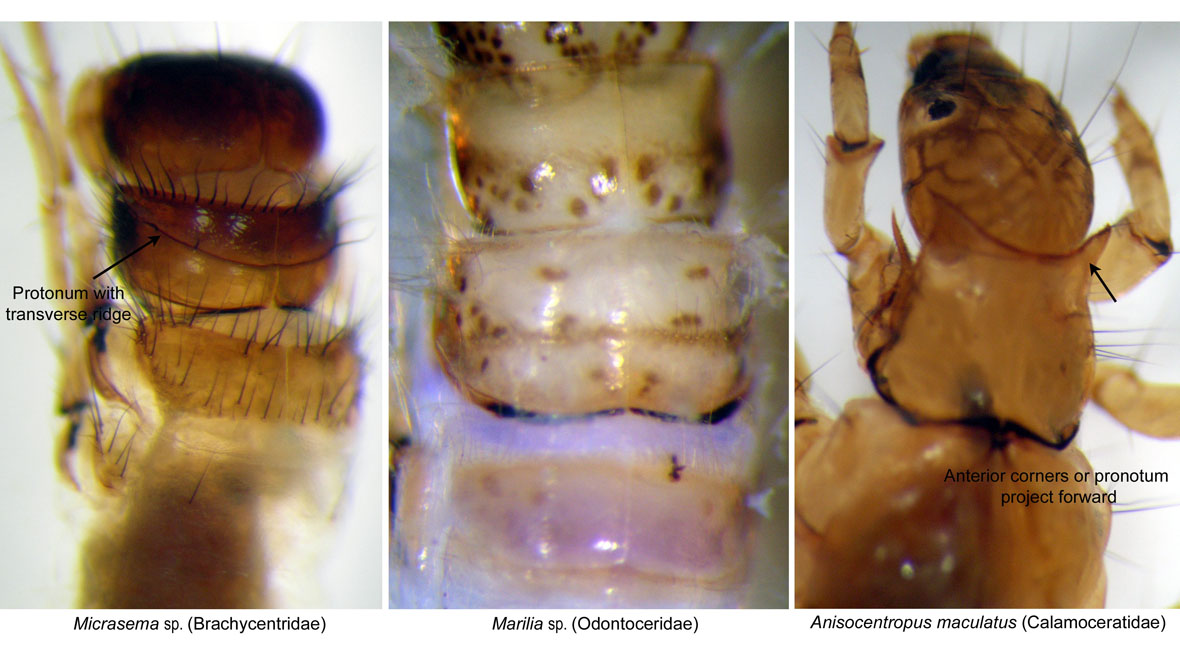 |
||
| ***** 6. Structure of legs ****** | ||
| Architecture of legs may be different for functional purposes. e.g. Strong and robust prolegs of rhyacophilid larvae aided in grasping preys tight. For Integripalpia (portable-case makers), hinglegs are highly elongated, especially for leptocerid larvae, their femur and tibia are divided into two 'pseudosegments' and presence of long claws which help to protrude forward out of the case | ||
 |
||
| ***** 7. Structure of abdomen ****** | ||
Absence of ventral abdominal gills for most families in trichoptera, but Hydropsychid species are having ventral and even lateral abdominal gills that is a key family feature. And the way of gill branching is a further criteria to separate species into subgroups in Hydropsychidae. e.g. gills arisen from a 'central' stalk in subgroup of Macronematinae |
||
 |
||
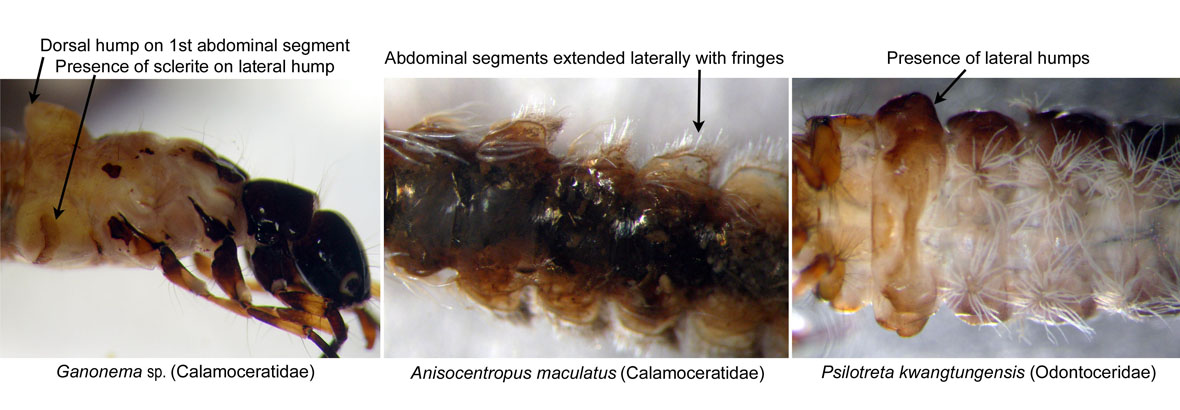 |
||
| ***** 8. Shape of anal prolegs ****** | ||
Trichopterans do not possess abdominal prolegs like Lepidopterans, but anal prolegs and claw are present. For glossosomatid larvae, their anal prolegs are short and broadly joined to abdominal segment IX and their anal claws are small with associated hook. In contrast, anal prolegs are long projecting outward and their anal claws are long and robust for ecnomid larvae |
||
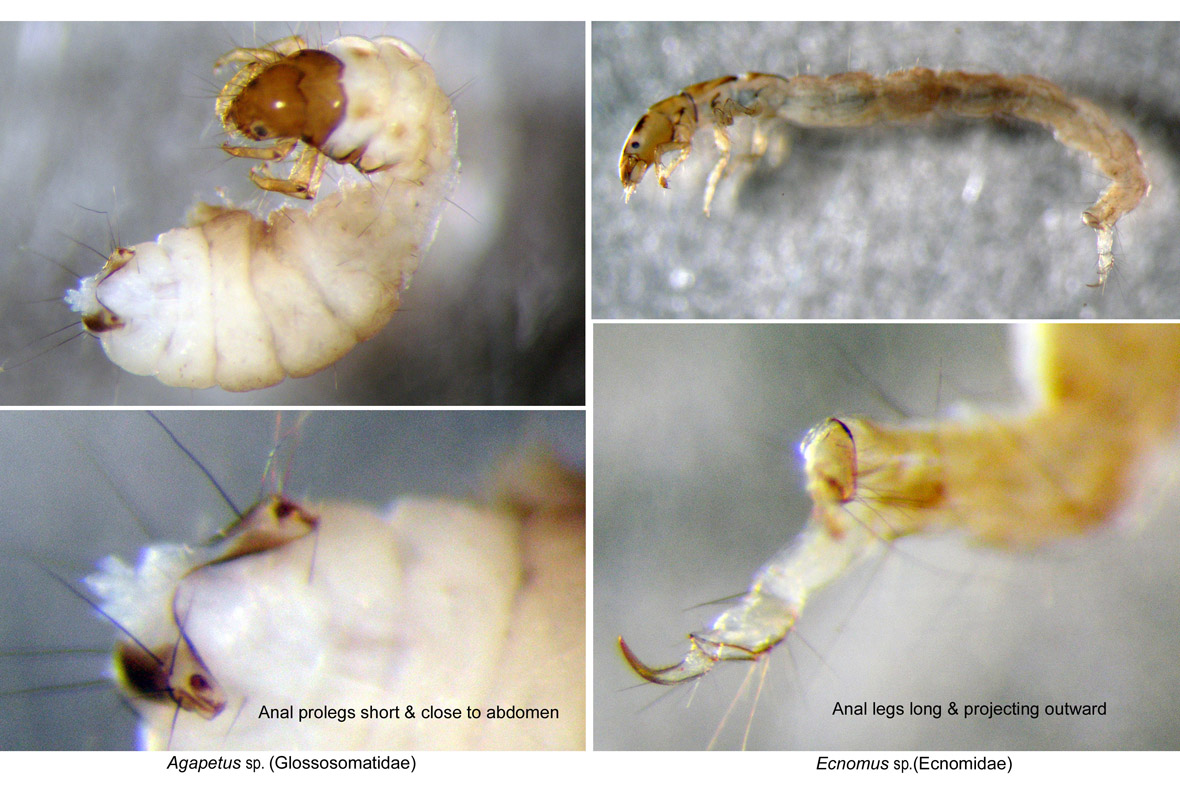 |
||
| ***** 9. Type of larval retreats or portal cases ****** | ||
Materials used for making cases may be varied from sand, leaves and twigs. Architecture of cases is very diverse and unique to specific genus or even species |
||
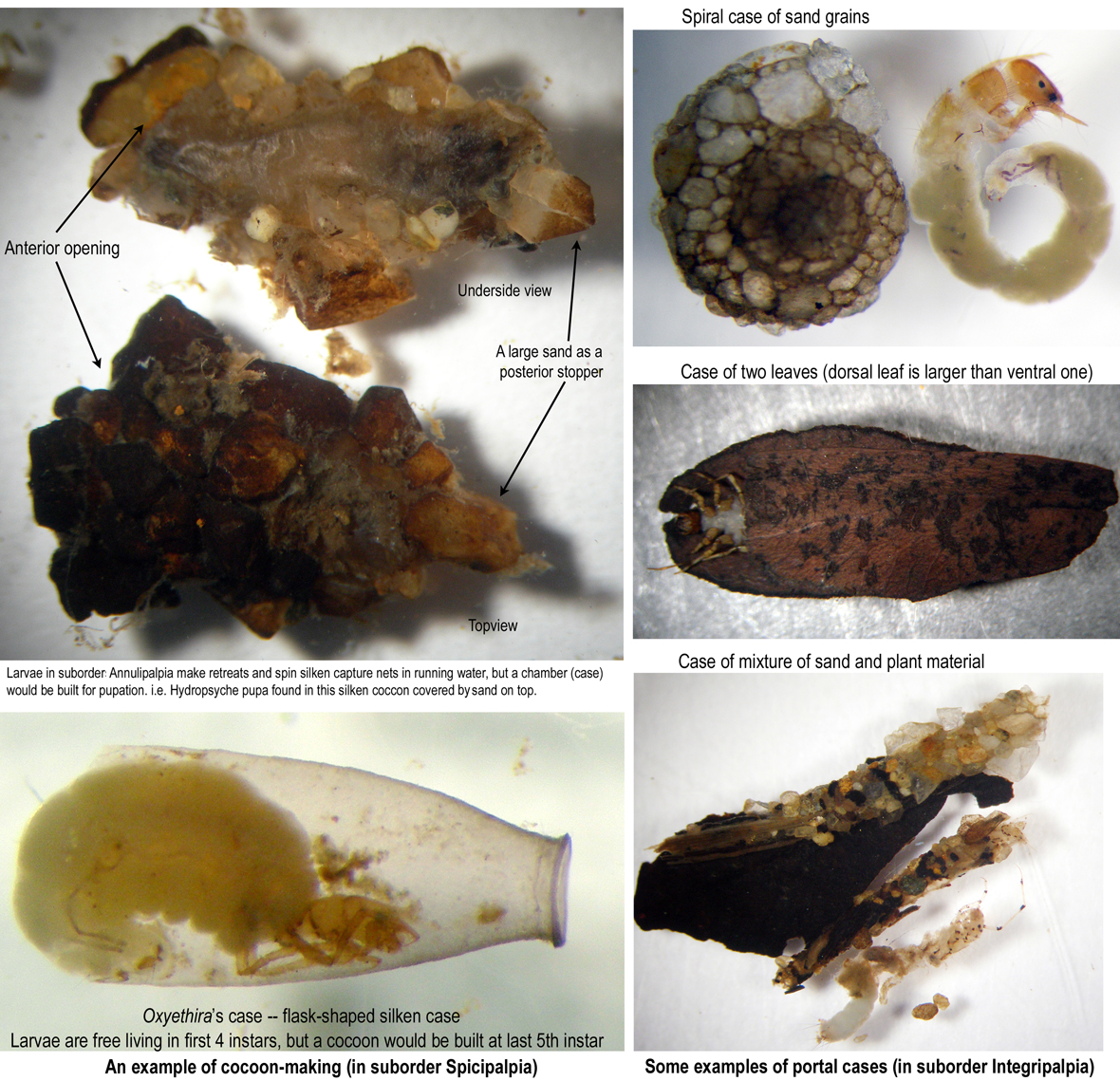 |
||
